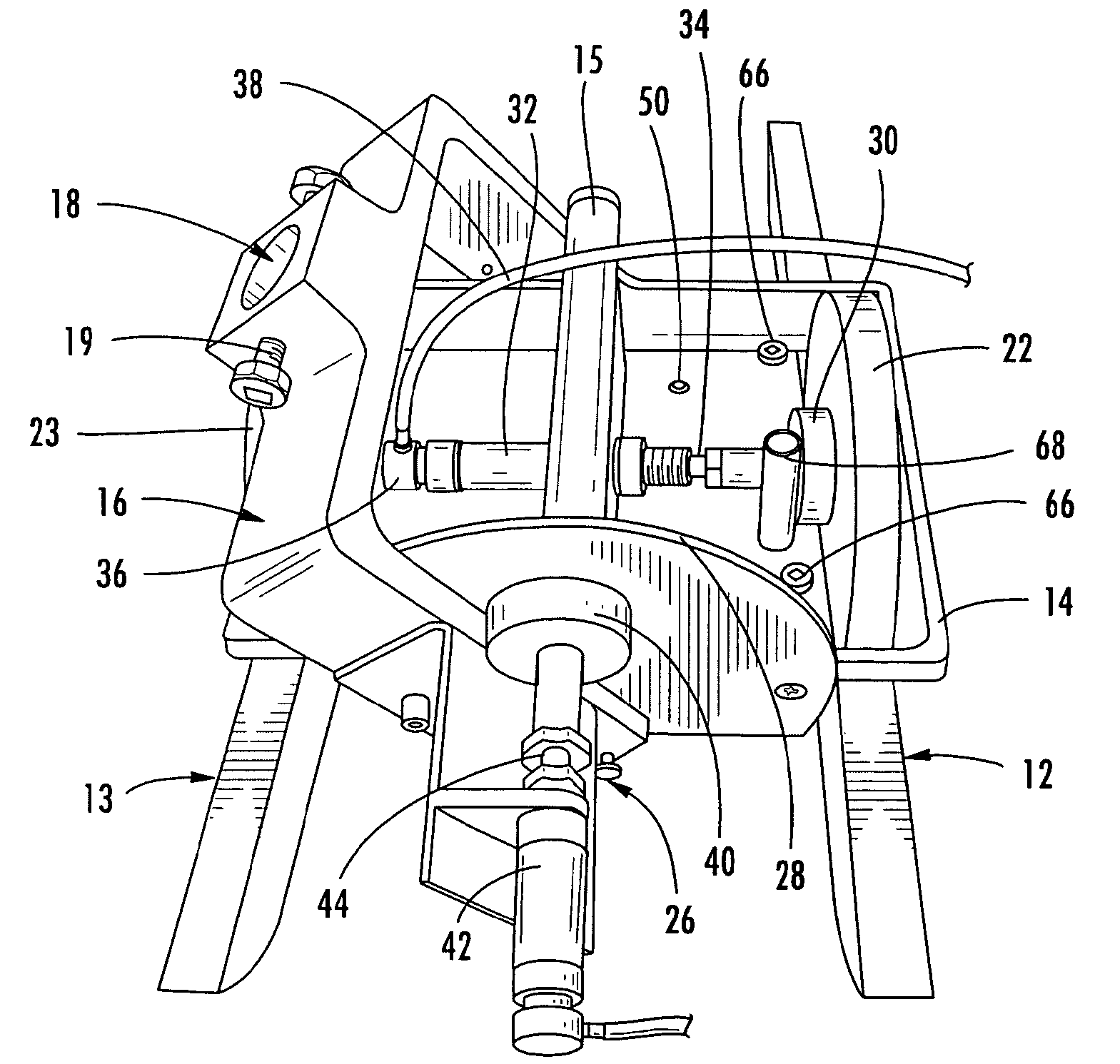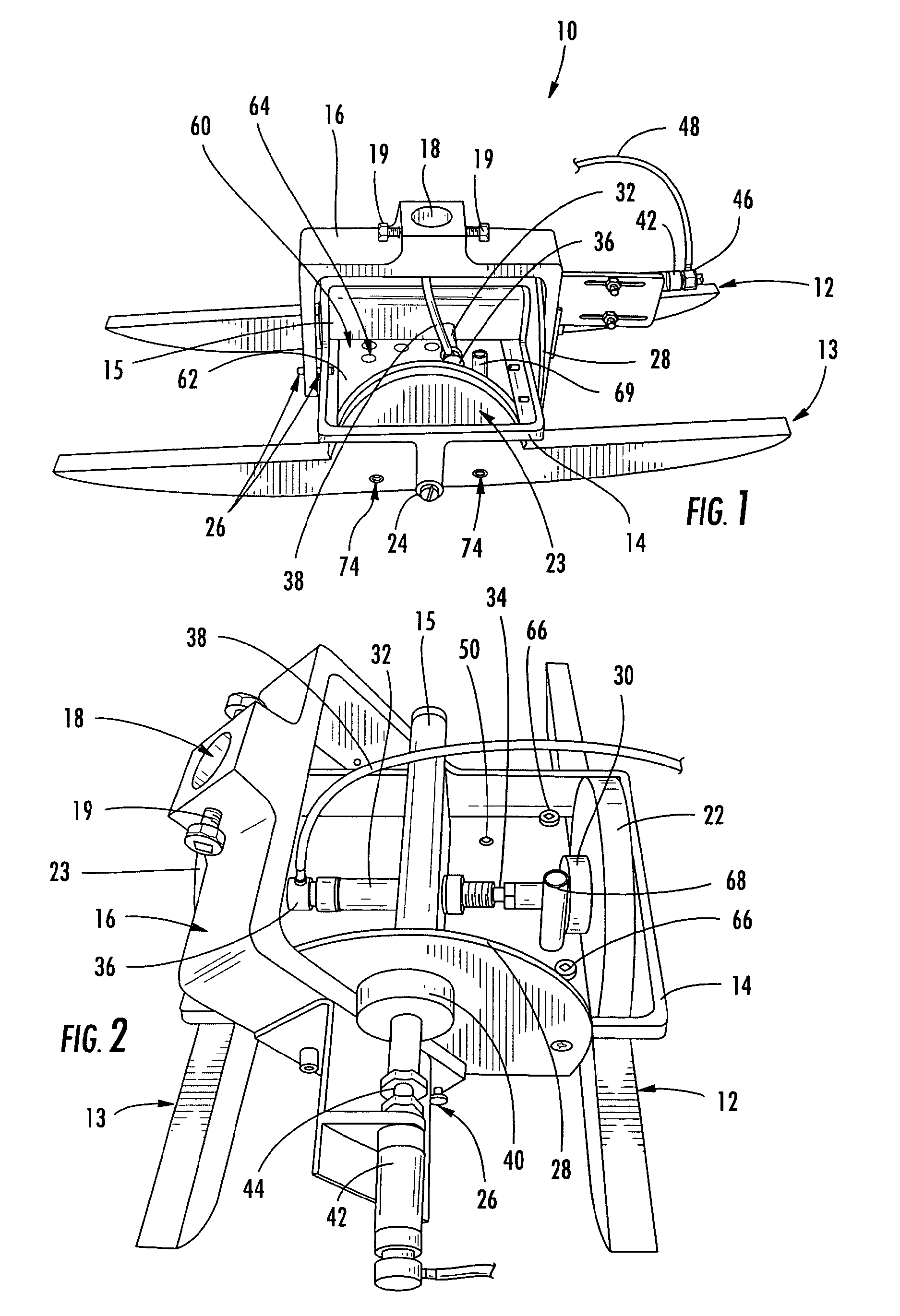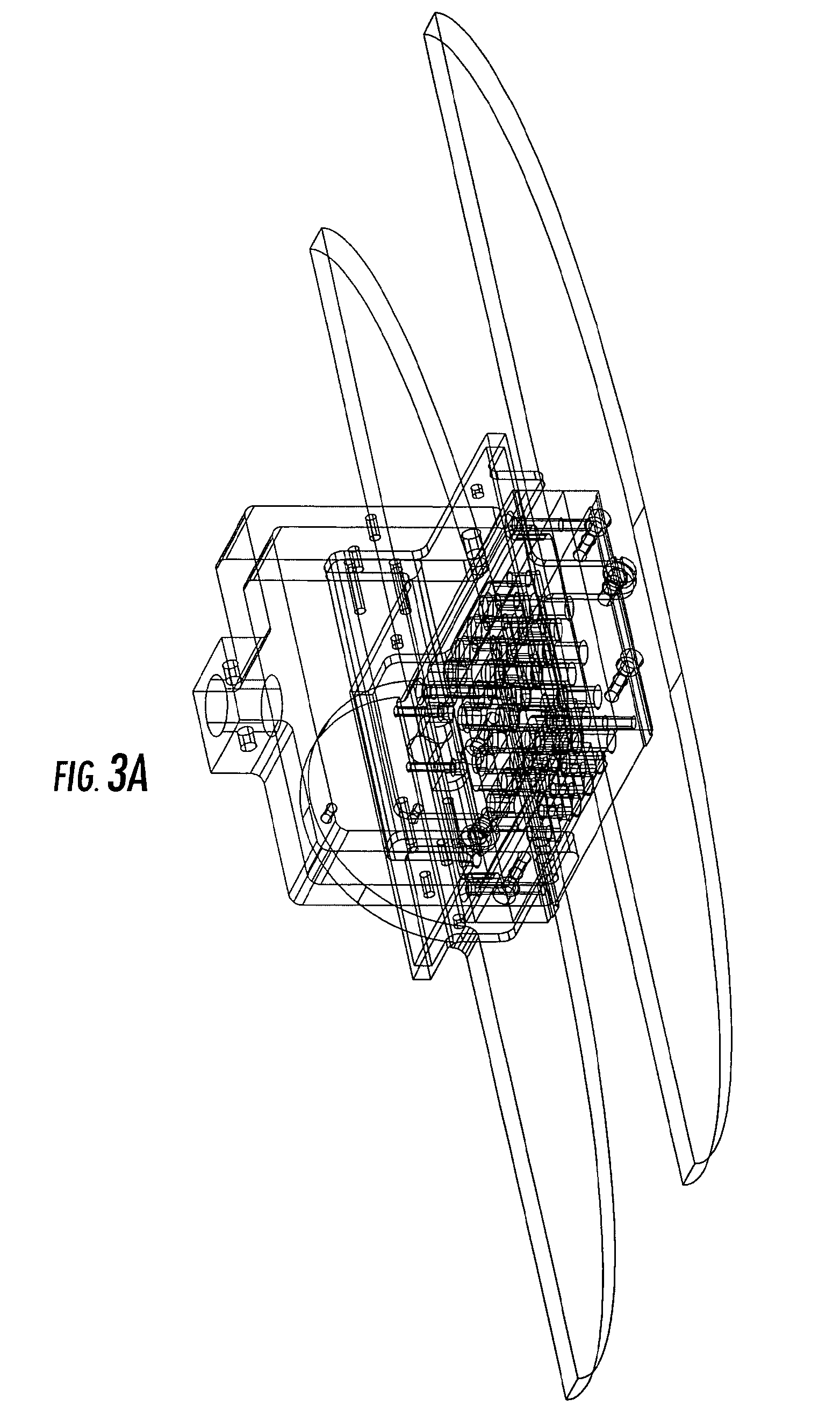Multiple-frequency ultrasonic test probe, inspection system, and inspection method
a multi-frequency ultrasonic and test probe technology, applied in the direction of ultrasonic/sonic/infrasonic wave generation, instruments, magnetic property measurements, etc., can solve the problems of not always being able to perform continuous scanning of structures with holes, introducing additional time and labor, and limiting the access to interior surfaces of structures, etc., to reduce the necessary sophistication of motion control systems, increase inspection speed and efficiency, and reduce costs
- Summary
- Abstract
- Description
- Claims
- Application Information
AI Technical Summary
Benefits of technology
Problems solved by technology
Method used
Image
Examples
Embodiment Construction
[0040] The following detailed description is merely illustrative in nature and is not intended to limit the embodiments of the invention or the application and uses of such embodiments. Furthermore, there is no intention to be bound by any expressed or implied theory presented in the preceding technical field, background, brief summary or the following detailed description. For the sake of brevity, conventional aspects of pulse-echo ultrasonic transducers, nondestructive testing procedures, robotics, and other aspects of the systems (and the individual operating components of the systems) may not be described in detail herein.
[0041] The contents of U.S. Pat. No. 6,722,202 (titled “Method and Apparatus for Inspecting a Structure Utilizing Magnetically Attracted Probes”), United States patent application publication No. 2006 / 0010980 A9 (titled “Non-Destructive Inspection Device for Inspecting Limited-Access Features of a Structure”), United States patent application publication No. 2...
PUM
| Property | Measurement | Unit |
|---|---|---|
| frequency | aaaaa | aaaaa |
| frequency | aaaaa | aaaaa |
| ultrasonic transducer | aaaaa | aaaaa |
Abstract
Description
Claims
Application Information
 Login to View More
Login to View More - R&D
- Intellectual Property
- Life Sciences
- Materials
- Tech Scout
- Unparalleled Data Quality
- Higher Quality Content
- 60% Fewer Hallucinations
Browse by: Latest US Patents, China's latest patents, Technical Efficacy Thesaurus, Application Domain, Technology Topic, Popular Technical Reports.
© 2025 PatSnap. All rights reserved.Legal|Privacy policy|Modern Slavery Act Transparency Statement|Sitemap|About US| Contact US: help@patsnap.com



